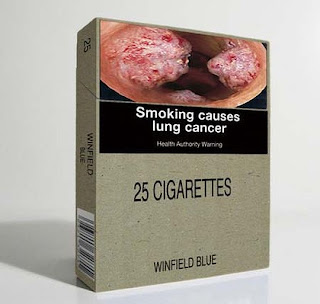Tuesday, August 21, 2012
Patience--the forgotten virtue
My second post for Fast Company has been published. By way of John Cleese, it talks about how patience may be a missing ingredient for branding in general and for J. C. Penney in particular.
Photo
Thursday, July 26, 2012
Olympic sponsors make the public pay the price
Wednesday, March 28, 2012
Brand Architecture: Building Brand Value
My latest post is out on MarketingDaily. This one is about brand architecture and, specifically, the usefulness of brand value as a way to evaluate brand architecture options.
Brand architecture is almost always about trade-offs--a single brand strategy may be very efficient but you may lose the ability to focus on a particular customer or market segment whereas a P&G-like house of brands strategy is all about focus but is much more expensive to operate.
Brand value thinking boils down decisions into an evaluation of costs and benefits--will the customer be willing to pay more for a benefit than it costs the company to create that benefit? Such thinking puts a premium on simplicity and challenges businesses to look for sources of inefficiency and waste.
There can be strong arguments for going to market with a portfolio of brands but there's no excuse for wasting money supporting a complicated and expensive brand architecture if it's not paying its way.
In brand architecture, less is often more.
Photo
Thursday, January 19, 2012
In taste, brand matters
My latest post is out on MarketingDaily. In it, I talk about the power of packaging to influence taste. Research has show that people are highly sensitive to non-taste cues when they are evaluating the taste of something.
As I say in the post: "It’s not just about the product inside. The brand matters because it tells consumers what to expect and influences how they evaluate a product."
You may be curious which beer was the "outright loser" in my blind taste test (maybe as curious as I am about why this part of the story was edited out) but, hopefully, your curiosity is now satisfied.
Photo
Wednesday, December 14, 2011
15 Social Media Tips for the holidays
Here's my holiday gift to my readers. To be honest, it's a regift, since these social media tips were originally published (in longer form) in the MarketingDaily. There are five tips on basic social media principles and approach and ten tips on criteria for planning social media programs.
Principles
1. Be human
Social media is about engaging with customers on a personal level, something marketers sometimes forget. In social media
interaction, you should be asking yourself: 'What would a human do?' And
do that.
2. Don’t overreach
Most brands, especially CPG brands, aren't all that engaging from a consumer perspective. So go easy on the pedal--the #1 reason that brands get 'unliked' on Facebook is that they post too frequently.
3. Add value
You can always add value, however mundane your product. You can provide useful information, take up an important
cause or, if all else fails, give
out coupons (which is what most consumers want anyway).
4. Listen and respond
95% of questions posted on their Facebook are not answered.
95%! I don't think answering questions is optional. You get to talk but you also need to listen and
respond.
5. Use the f*ing tools yourself
Only 26% of CMOs are actually using social media tools. Not good
enough!
Criteria
1. Brand-led
Start with the brand, not the social media platform.
2. Theme-led
Build your social media activities around a
specific theme. This helps pull everything together and makes the program more
impactful.
3. Product fit
Develop programs that take advantage of things your company is
good at or known for. These will have more credibility,
authenticity and impact.
4. Customer interests
Develop ideas that appeal to your customers. Find out what they like and what they care about enough to spend some of their limited free time discussing with you.
5. Other marketing program fit
Leverage your existing marketing activity. Programs that build on advertising or promotion
activity or sponsorship events have a head start.
6. Social media fit
Pick the right social
media platform for your activity--each one is great for some things, less suited for others.
Not everything needs to on Facebook!
7. Impact
Select programs that are worth the effort in terms of the number and quality of people they will reach.
8. Efficiency
Define the objectives of your social media activities upfront and identify the metrics that you will use to see if they worked.
9. Risk assessment
Assess the risk are you incurring with social media activities.
10. Long term vs. short term
Make sure, especially for longer-term programs, that you are going to be able to support them both financially and operationally.
Meanwhile, The CMO Council has published a survey which shows that marketers are continuing to struggle with what to do with social media. The survey polled both consumers and marketers and found a significant gap between what people want from brands and what they are actually getting.
As the report says: "The bottom line is that consumers want more—more experiences, more engagement, more rewards, and more reasons to connect with each other and brands through social media. And brands are missing the boat. They see the benefits of reaching out to customers through social channels, but they aren’t yet fully invested. While 52 percent of marketers reported they believe their brands have enjoyed greater influence thanks to their presence in social networks like Facebook, only 17 percent said that social media is fully meshed, aligned, and integrated into the overall marketing mix."
Lots more to do in 2012!
Monday, November 21, 2011
Lululemon puts an Ayn Rand stamp on yoga
As reported on NPR, the company's new shopping bags feature the question: "Who is John Galt?". And who is John Galt? He's the protagonist of Ayn Rand's novel Atlas Shrugged where she laid out her Objectivist philosophy, including the idea that selfishness is a virtue, a very un-yoga-like position.
Why this seeming act of self-destruction? Lululemon's own post on the subject explains that Chip Wilson, the company's founder, read Atlas Shrugged when he was 18 and was really inspired by it. So this could be a simple story about another ego-charged CEO running amok. But it's a bit more complicated than that.
The company was, in fact, founded with the mission to "elevate the world from mediocrity to greatness," an idea straight out of the Rand book. And its culture reflects many of her ideals. If you look at Lululemon's brand manifesto, you can see that it's a sampling of ideas and philosophies, some yoga-compatible ("The pursuit of happiness is the source of all unhappiness") and some more Rand-like ("Successful people replace the words 'wish,' 'should' and 'try' with 'I WILL.'").
As long as you don't delve too deeply, the company's mix and match of ideas kind of holds together and the company has clearly thrived despite its ideological impurity. The problem with the John Galt bags is that they shine a bright light at just one of the sources of inspiration and a very polarizing one at that. Now everyone who buys from the store will be carrying out a political statement as well as some expensive clothes.
Let's see what the impact will actually be. Maybe nothing. Whole Foods didn't suffer any lasting damage when its CEO did something similar. But the bags have caused quite a stir in some quarters of the yoga community with many promising never to buy anything from the store ever again.
Monday, November 14, 2011
Australia's new cigarette law bans branded packaging, tests branding principles
The one thing that the government and the cigarette manufacturers agree on is that the impact will be significant. Given previous bans on advertising, sponsorships and other forms of marketing communication, the pack is the last bastion of branding activity. Health Minister Nicola Roxon says that she believes the new law will give Australia the best chance of having the lowest smoking rate in the world.
Manufacturers, for their part, have threatened legal action on the basis that the new rules restrict their trademark and intellectual property rights. The British American Tobacco Australia (BATA) issued a statement which said: "The result of BATA's legal challenges could force Health Minister Nicola Roxon to pay tobacco companies billions of dollars for the removal of trademarks, brands and pack space."
Assuming these legal challenges fail and the law goes into effect, what will happen? Will demand go down as expected? Not according to the cigarette manufacturers. They are actually predicting that demand will go up because they will be forced to compete on price. David Crow, CEO of BATA, says that's what his company intends to do: "We will obviously focus on pricing given it's the only thing really left to differentiate brands."
So could the unintended consequence of the legislation be that smoking actually increases because the market is flooded with cheap cigarettes? The cigarette manufacturers have an obvious interest in coming up with worst-case scenarios but this one does seem to have some merit.






